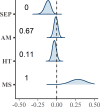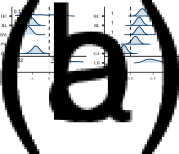Life-history tradeoffs in a historical population (1896-1939) undergoing rapid fertility decline: Costs of reproduction?
- PMID: 35611262
- PMCID: PMC7612759
- DOI: 10.1017/ehs.2022.2
Life-history tradeoffs in a historical population (1896-1939) undergoing rapid fertility decline: Costs of reproduction?
Abstract
Evolutionary demographers often invoke tradeoffs between reproduction and survival to explain reductions in fertility during demographic transitions. The evidence for such tradeoffs in humans has been mixed, partly because tradeoffs may be masked by individual differences in quality or access to resources. Unmasking tradeoffs despite such phenotypic correlations requires sophisticated statistical analyses that account for endogeneity among variables and individual differences in access to resources. Here we tested for costs of reproduction using N=13,663 birth records from the maternity hospital in Basel, Switzerland, 1896-1939, a period characterized by rapid fertility declines. We predicted that higher parity is associated with worse maternal and offspring condition at the time of birth, adjusting for age and a variety of covariates. We used Bayesian multivariate, multilevel models to simultaneously analyze multiple related outcomes while accounting for endogeneity, appropriately modeling non-linear effects, dealing with hierarchical data structures, and effectively imputing missing data. Despite all these efforts, we found virtually no evidence for costs of reproduction. Instead, women with better access to resources had fewer children. Barring limitations of the data, these results are consistent with demographic transitions reflecting women's investment in their own embodied capital and/or the adoption of maladaptive low-fertility norms by elites.
Keywords: Demographic transition; Evolutionary demography; Historical demography; Life-history theory; Quantity-quality tradeoff.
Conflict of interest statement
Conflict of interest: Rebecca Sear is an editor at Evolutionary Human Sciences.
Figures





References
-
- Blurton Jones, N. G. (2016). Demography and evolutionary ecology of the Hadza hunter–gatherers. Cambridge University Press.
-
- Bogin, B. (1999). Patterns of human growth (2nd ed.). Cambridge University Press.
-
- Bürkner, P.-C. (2017). brms: An R package for Bayesian multilevel models using Stan. Journal of Statistical Software, 80. doi: 10.18637/jss.v080.i01. - DOI
Grants and funding
LinkOut - more resources
Full Text Sources
